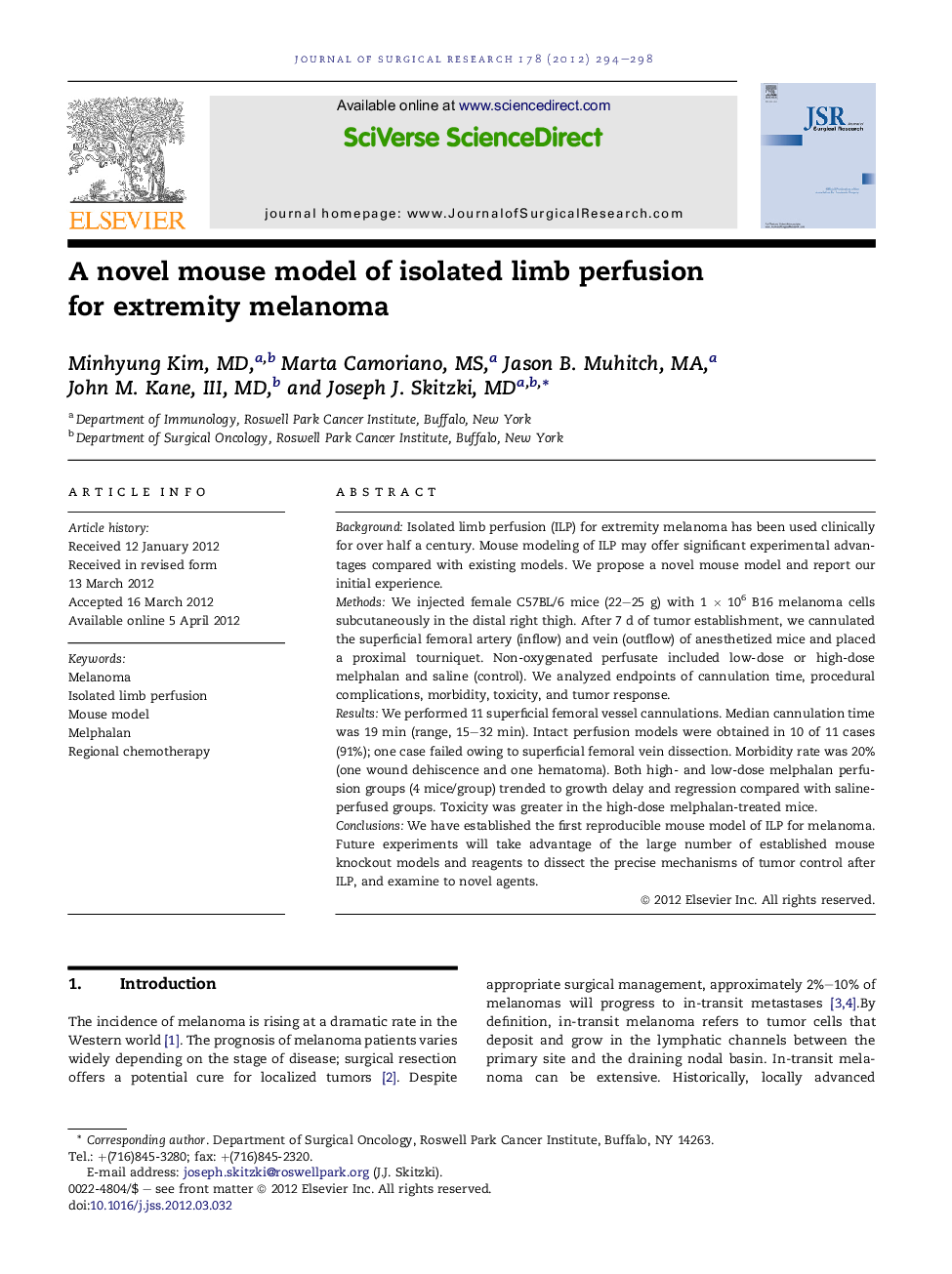| کد مقاله | کد نشریه | سال انتشار | مقاله انگلیسی | نسخه تمام متن |
|---|---|---|---|---|
| 4301395 | 1288437 | 2012 | 5 صفحه PDF | دانلود رایگان |

BackgroundIsolated limb perfusion (ILP) for extremity melanoma has been used clinically for over half a century. Mouse modeling of ILP may offer significant experimental advantages compared with existing models. We propose a novel mouse model and report our initial experience.MethodsWe injected female C57BL/6 mice (22–25 g) with 1 × 106 B16 melanoma cells subcutaneously in the distal right thigh. After 7 d of tumor establishment, we cannulated the superficial femoral artery (inflow) and vein (outflow) of anesthetized mice and placed a proximal tourniquet. Non-oxygenated perfusate included low-dose or high-dose melphalan and saline (control). We analyzed endpoints of cannulation time, procedural complications, morbidity, toxicity, and tumor response.ResultsWe performed 11 superficial femoral vessel cannulations. Median cannulation time was 19 min (range, 15–32 min). Intact perfusion models were obtained in 10 of 11 cases (91%); one case failed owing to superficial femoral vein dissection. Morbidity rate was 20% (one wound dehiscence and one hematoma). Both high- and low-dose melphalan perfusion groups (4 mice/group) trended to growth delay and regression compared with saline-perfused groups. Toxicity was greater in the high-dose melphalan-treated mice.ConclusionsWe have established the first reproducible mouse model of ILP for melanoma. Future experiments will take advantage of the large number of established mouse knockout models and reagents to dissect the precise mechanisms of tumor control after ILP, and examine to novel agents.
Journal: Journal of Surgical Research - Volume 178, Issue 1, November 2012, Pages 294–298